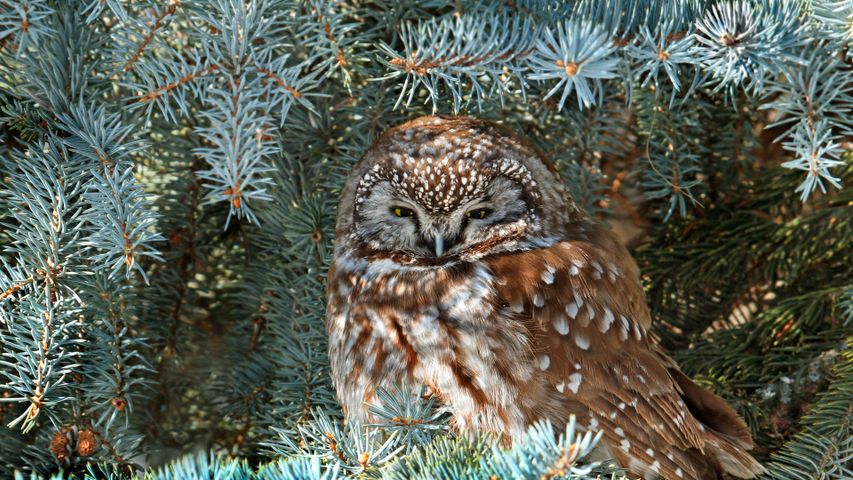Great horned owl
© Mark Newman/Getty Image
Great horned owl
The Halloween season is upon us, so let's meet one of the holiday's icons: the great horned owl. With its keen vision, eerie vocalisations and silent flight, this owl has historically been revered and feared. In folklore and mythology, owls were considered symbols of wisdom and omens of death. On Samhain, the Celtic precursor to Halloween, the owl was believed to be the kin of roaming spirits.
The owl in today's image is far more than a character in ghostly tales. Often called the 'tiger of the air,' the great horned owl, named for its signature feathers that look like horns, is one of the most fearsome and adaptable predators in the ornithological world. Primarily active at night, the owl has large, powerful talons that exert around 2,100 kilopascals of pressure, which it uses to grab prey like small rodents and skunks. It has incredible night vision, but its eyes are fixed, so it must turn its head a whopping 270 degrees to see everything. So, whether you hear it hooting from treetops or see it flying in the night, this owl proves that not all scary apparitions are supernatural.
Related Images
Bing Today Images





 Northern hawk-owl, Canada
Northern hawk-owl, Canada
 Dusky eagle-owls, Pakistan
Dusky eagle-owls, Pakistan
 Burrowing owl chicks near a burrow, Wyoming, USA
Burrowing owl chicks near a burrow, Wyoming, USA
 Eurasian lynx in the snow
Eurasian lynx in the snow
 Boreal owl, Saskatchewan, Canada
Boreal owl, Saskatchewan, Canada
 Bald eagle, Tongass National Forest, Alaska, USA
Bald eagle, Tongass National Forest, Alaska, USA
 Great horned owl fledglings
Great horned owl fledglings
 Barn owl, England
Barn owl, England
